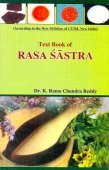Candramrita, Candra-amrita, Candrāmṛta: 3 definitions
Introduction:
Candramrita means something in Hinduism, Sanskrit. If you want to know the exact meaning, history, etymology or English translation of this term then check out the descriptions on this page. Add your comment or reference to a book if you want to contribute to this summary article.
The Sanskrit term Candrāmṛta can be transliterated into English as Candramrta or Candramrita, using the IAST transliteration scheme (?).
Alternative spellings of this word include Chandramrita.
In Hinduism
Ayurveda (science of life)
Dietetics and Culinary Art (such as household cooking)
Source: Shodhganga: Dietetics and culinary art in ancient and medieval IndiaCandrāmṛta (चन्द्रामृत) or Candrāmṛtasrāviṇī refers to a type of Śikhariṇī which is a curd drink, according the 17th-century Bhojanakutūhala (dravyaguṇāguṇa-kathana), and is commonly found in literature dealing with the topics of dietetics and culinary art, also known as Pākaśāstra or Pākakalā.—There is a section devoted to describe a particular curd drink known as śikhariṇī. This is prepared by mixing curds, sugar with the spices. The prakaraṇa explains different types of śikhariṇīs [like candrāmṛta-srāviṇī].
Rasashastra (Alchemy and Herbo-Mineral preparations)
Source: Wisdom Library: Rasa-śāstraCandrāmṛta (चन्द्रामृत) or Candrāmṛtarasa is the name of an Ayurvedic recipe defined in the fifth volume of the Rasajalanidhi (chapter 3, Kāsaroga: cough-related-diseases). These remedies are classified as Iatrochemistry and form part of the ancient Indian science known as Rasaśāstra (medical alchemy). However, since it is an ayurveda treatment it should be taken with caution and in accordance with rules laid down in the texts.
Accordingly, when using such recipes (e.g., candrāmṛta-rasa): “the minerals (uparasa), poisons (viṣa), and other drugs (except herbs), referred to as ingredients of medicines, are to be duly purified and incinerated, as the case may be, in accordance with the processes laid out in the texts.” (see introduction to Iatro chemical medicines)

Āyurveda (आयुर्वेद, ayurveda) is a branch of Indian science dealing with medicine, herbalism, taxology, anatomy, surgery, alchemy and related topics. Traditional practice of Āyurveda in ancient India dates back to at least the first millenium BC. Literature is commonly written in Sanskrit using various poetic metres.
See also (Relevant definitions)
Partial matches: Candra, Amrita.
Starts with: Candramritarasa, Candramritasravini.
Query error!
Full-text: Upasanacandramrita, Candramritarasa, Candramritasravini, Chandramritasravini, Sphurat.
Relevant text
Search found 4 books and stories containing Candramrita, Candra-amrita, Candra-amṛta, Candra-amrta, Candrāmṛta, Candramrta; (plurals include: Candramritas, amritas, amṛtas, amrtas, Candrāmṛtas, Candramrtas). You can also click to the full overview containing English textual excerpts. Below are direct links for the most relevant articles:
Atharvaveda and Charaka Samhita (by Laxmi Maji)
Dhanvantari (Āyurveda scholar) < [Chapter 1 - Introduction]
Chaitanya Bhagavata (by Bhumipati Dāsa)
Verse 2.1.165 < [Chapter 1 - The Beginning of the Lord’s Manifestation and His Instructions on Kṛṣṇa-saṅkīrtana]
Verse 3.1.72 < [Chapter 1 - Meeting Again at the House of Śrī Advaita Ācārya]
Verse 1.2.62 < [Chapter 2 - The Lord’s Appearance]
Shri Gaudiya Kanthahara (by Srila Bhaktisiddhanta Sarasvati)
Journal of Ayurveda and Integrative Medicine
Insights from a veteran oncologist in integrative oncology < [Volume 14 (issue 1), Jan-Feb 2023]
Related products
